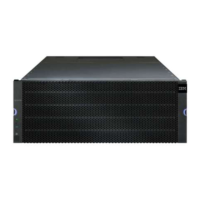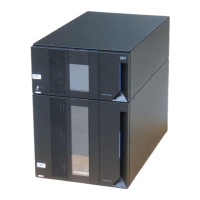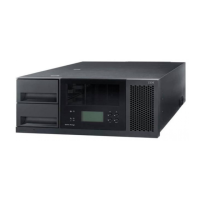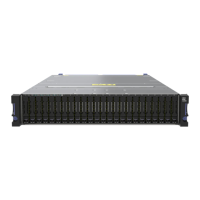A custom data pattern file called diagnosticsDataPattern.dpf is included in the root directory of the
installation CD. You can modify this file, but the file must have these properties to work correctly for the
tests:
v The file values must be entered in hexadecimal format (00 to FF) with only one space between the
values.
v The file must be no larger than 64 bytes in size. Smaller files will work, but larger files can cause an
error.
The test results contain a generic, overall status message and a set of specific test results. Each test result
contains these items:
v Test (read, write, or data loopback)
v Port (read or write)
v Level (internal or external)
v Status (pass or fail)
Events are written to the Event Log when the diagnostics are started and when testing is completed.
These events help you to evaluate whether diagnostics testing was successful or failed and the reason for
the failure.
Running Read Link Status Diagnostics
Read link status (RLS) error counts refer to link errors that have been detected in the traffic flow of a
Fibre Channel loop. The errors detected are represented as a count (32-bit field) of error occurrences that
are accumulated over time. The counts provide coarse measure of the integrity of the components and
devices on the loop. By analyzing the error counts that are retrieved, you can determine the components
or devices within the Fibre Channel loop that might be experiencing problems communicating with the
other devices on the loop. A high error count for a particular component or device indicates that it might
be experiencing problems and should be given immediate attention.
Error counts are calculated from the current baseline. The baseline describes the error count values for
each type of device in the Fibre Channel loop, either when the controller goes through its start-of-day
sequence or when you reset the baseline. The baseline indicates the difference in error counts from the
time the baseline was established to the time you request the read link status data.
The script command set provides two commands for running RLS diagnostics:
v reset storageSubsystem RLSBaseline – Resets the RLS baseline for all devices by setting all of the
counts to 0.
v save storageSubsystem RLSCounts – Saves the RLS counters to a file that you can review later. The
default file name is readLinkStatus.csv.
Run the reset storageSubsystem RLSBaseline command before you run the save storageSubsystem
RLSBaseline command.
The following table lists the type of data contained by the file that is generated by the save
storageSubsystem RLSBaseline command.
Table 11-3. RLS Baseline Data for the Storage Subsystem
Type of Data Description
Devices
A list of all devices on the Fibre Channel loop.
The devices appear in channel order. Within each channel,
the devices are sorted according to the device position in the
loop.
11-10 IBM System Storage DS3000, DS4000, and DS5000: Command Line Interface and Script Commands Programming Guide

